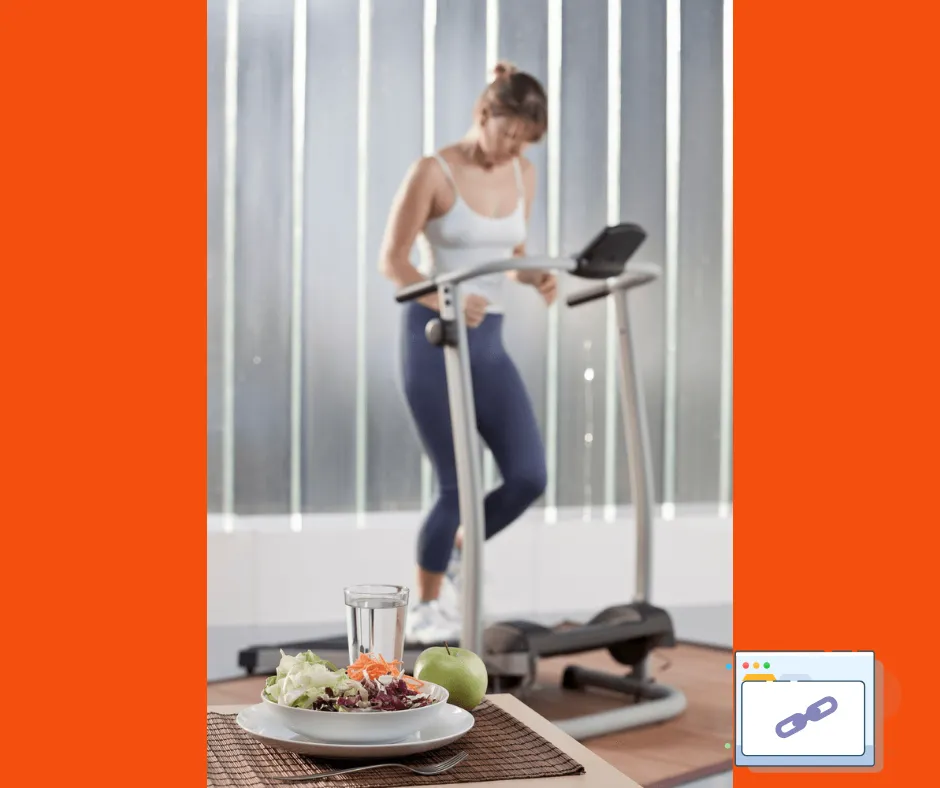From Weights to Cardio Versatility of the Home Gym
In recent years, the concept of the home gym has evolved from a simple collection From Weights to Cardio Versatility of the Home Gym and exercise equipment into a versatile fitness hub that caters to diverse workout preferences and goals.
As more individuals seek to balance their busy lifestyles with effective fitness routines, the home gym has emerged as a practical solution, allowing users to integrate strength training and cardiovascular exercises seamlessly.
This article explores the multifaceted nature of home gyms, highlighting how they can accommodate various workout styles—from traditional weightlifting to high-intensity interval training (HIIT) and beyond.
With advancements in technology and the proliferation of compact, multifunctional equipment, creating a personalized fitness space at home has never been more accessible.
We will also examine the benefits of incorporating both weights and cardio into a comprehensive fitness regimen, emphasizing how this dual approach can enhance overall health, boost performance, and contribute to sustained motivation.
Whether you are a seasoned athlete or a fitness novice, understanding the versatility of the home gym can empower you to design an effective workout environment that aligns with your unique lifestyle and fitness aspirations.
Join us as we delve into the essentials of building and optimizing your own home gym for a holistic approach to health and wellness.
Table of Contents From Weights to Cardio Versatility of the Home Gym
Home gyms offer diverse workout options
Equipping a home gym allows individuals to tailor their fitness environment to suit a wide array of exercise preferences and goals.
With a variety of equipment choices, such as free weights, resistance bands, and cardio machines, users can create personalized workout routines that incorporate strength training, cardiovascular exercises, and flexibility work.
This accessibility not only enhances adherence to fitness regimes but also promotes the exploration of different training modalities, encouraging users to diversify their workouts and avoid plateaus.
Moreover, the convenience of having a fully equipped gym at home fosters consistency, as individuals can easily engage in physical activity at their own pace and schedule.
Whether pursuing high-intensity interval training, yoga, or traditional weightlifting, the home gym setting eliminates barriers such as travel time and gym overcrowding.
As a result, individuals can more readily focus on their fitness journey, experiment with various training methods, and ultimately achieve a well-rounded approach to health and wellness.
Weights build strength and muscle endurance
Incorporating weight training into a fitness regimen significantly enhances both strength and muscle endurance, providing a foundational element for overall physical health.
Engaging in resistance training with weights stimulates muscle fibers, promoting hypertrophy and increasing muscular strength over time.
This adaptation not only allows individuals to lift heavier loads but also improves performance in daily activities and athletic pursuits.
As strength increases, so too does the ability to perform movements with greater efficiency and reduced risk of injury.
Furthermore, consistent weight training contributes to improved muscle endurance, enabling individuals to sustain prolonged physical activities.
By challenging muscles with varying weights and repetitions, individuals can enhance their stamina, allowing them to perform everyday tasks with greater ease and less fatigue.
This dual benefit of strength and endurance supports a well-rounded fitness approach, ensuring that individuals are not only stronger but also better equipped to handle the demands of an active lifestyle.
Cardio improves heart health and stamina
Incorporating cardiovascular exercise into a fitness routine is essential for enhancing heart health and overall stamina.
Regular aerobic activity strengthens the heart muscle, improving its efficiency in pumping blood and delivering oxygen to various tissues throughout the body.
This increased cardiovascular efficiency not only helps lower resting heart rates but also enhances circulation, which can lead to reduced blood pressure and a lower risk of heart disease.
Engaging in activities such as running, cycling, or swimming stimulates the heart, promoting adaptations that strengthen the cardiovascular system.
Moreover, consistent participation in cardiovascular workouts significantly boosts stamina, allowing individuals to engage in prolonged physical activities with greater ease.
As aerobic capacity improves, individuals can perform daily tasks and recreational activities without experiencing excessive fatigue.
This enhancement in endurance is crucial for overall quality of life, as it not only allows for more active participation in various pursuits but also contributes to improved mental well-being and resilience.
By integrating cardiovascular exercise into their fitness routines, individuals can achieve a balanced approach to health that supports both heart function and energy levels.
Versatile equipment maximizes workout efficiency
The integration of versatile equipment into a fitness regimen can dramatically enhance workout efficiency by enabling users to perform a wide range of exercises within a single session.
This adaptability allows individuals to seamlessly transition between strength training, cardiovascular workouts, and flexibility exercises, maximizing their available time and encouraging a more comprehensive approach to fitness.
Equipment such as adjustable dumbbells, resistance bands, and multifunctional home gym systems provide the necessary tools to target various muscle groups while incorporating different training modalities, ultimately leading to a more well-rounded fitness experience.
Incorporating such versatile equipment not only optimizes workout routines but also fosters creativity and motivation, as users can continually explore new exercises and combinations.
This flexibility reduces the monotony that often accompanies traditional workout regimens and can lead to greater adherence to fitness goals.
Furthermore, the ability to customize workouts based on individual preferences and fitness levels ensures that users remain engaged and challenged, which is vital for sustained progress.
Ultimately, the strategic use of versatile fitness equipment serves as a cornerstone for achieving effective and efficient workout sessions, paving the way for improved overall health and well-being.
Space-saving designs cater to small areas
Efficient utilization of limited space in urban settings has led to innovative design solutions that prioritize functionality without sacrificing aesthetics.
Furniture and fitness equipment tailored for compact areas often feature multipurpose capabilities, allowing them to transform effortlessly according to user needs.
For instance, foldable exercise machines or modular storage units can be easily stowed away when not in use, freeing up valuable square footage while maintaining a streamlined and organized environment.
Such designs not only enhance the usability of small spaces but also promote an active lifestyle by making fitness accessible within the home.
By integrating space-saving elements into their routines, individuals can maintain a commitment to wellness despite spatial constraints.
This approach encourages creativity in workout execution and fosters an environment where physical activity becomes an attainable and enjoyable part of daily life, regardless of living arrangements.
Customized routines enhance personal fitness goals
Tailoring fitness routines to individual needs and preferences plays a crucial role in achieving personal health objectives.
Customization allows individuals to focus on specific areas of improvement, whether that be building strength, increasing endurance, or enhancing flexibility.
By aligning workout plans with personal goals, fitness enthusiasts are more likely to stay motivated and engaged, leading to a more sustainable fitness journey.
This personalized approach mitigates the risk of burnout, as individuals can adjust their routines to maintain enthusiasm and address any emerging challenges or plateaus.
Furthermore, the incorporation of varied exercises caters to different skill levels and physical conditions, promoting inclusivity within fitness regimens.
Customized routines can encompass a mix of activities, from high-intensity interval training to restorative yoga, ensuring a well-rounded approach that can adapt over time.
This flexibility not only supports continuous improvement but also instills a sense of ownership over one’s fitness journey, fostering a deeper commitment to health and wellness.
In essence, the deliberate design of personal workout plans is an essential component in empowering individuals to reach and sustain their fitness aspirations.
Cost-effective alternative to gym memberships
exploring diverse training modalities but also significantly reduces financial barriers associated with traditional gym memberships.
Investing in basic fitness equipment, such as resistance bands, dumbbells, and a yoga mat, can create a comprehensive workout environment at home.
This not only allows individuals to save on monthly fees but also eliminates time constraints often associated with commuting to a gym.
Moreover, the rise of digital fitness resources, including streaming workouts and mobile applications, has expanded access to high-quality training programs without the associated costs of a gym.
These resources provide opportunities for guided workouts across various disciplines, enabling users to tailor their fitness experiences to their schedules and preferences.
As a result, individuals are empowered to develop a consistent workout routine that aligns with their lifestyle, reinforcing the idea that effective fitness can be achieved outside the confines of a gym setting.
Convenience allows for flexible workout schedules
of a traditional gym setting.
By offering the ability to exercise at any time, home fitness solutions accommodate different schedules and commitments, such as work, family, or social obligations.
This flexibility is particularly beneficial for those with unpredictable routines or those who may struggle to find time for a workout during standard gym hours.
Additionally, the convenience of working out at home minimizes the intimidation factor often experienced in public fitness spaces.
Individuals can choose to engage in their preferred activities without the pressure of onlookers, allowing for a more relaxed and focused workout experience.
This personalized environment fosters a sense of ownership over one’s fitness journey, which can lead to increased motivation and adherence to a regular exercise regimen.
In essence, the ability to mold workout schedules around personal availability not only enhances participation in fitness activities but also contributes to long-term wellness and personal growth.
In conclusion, the versatility of a home gym bridges the gap between strength training and cardiovascular fitness, making it an invaluable asset for any fitness enthusiast.
By integrating a diverse range of equipment and routines, individuals can tailor their workouts to meet their unique goals and preferences, all within the comfort of their own space.
This adaptability not only fosters consistency in exercise habits but also encourages a more holistic approach to health.
As the fitness landscape continues to evolve, investing in a well-rounded home gym setup will empower individuals to maintain their physical well-being and achieve optimal results, regardless of their schedule or access to traditional gym facilities.







